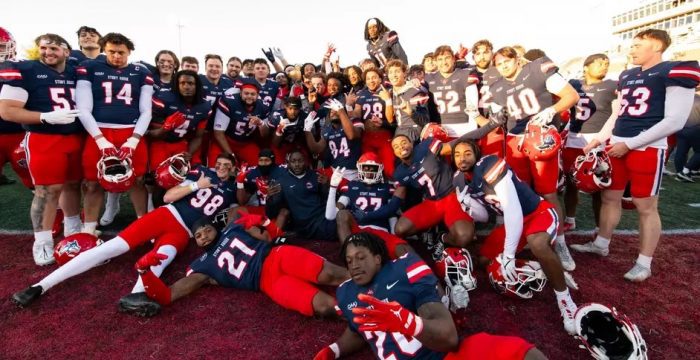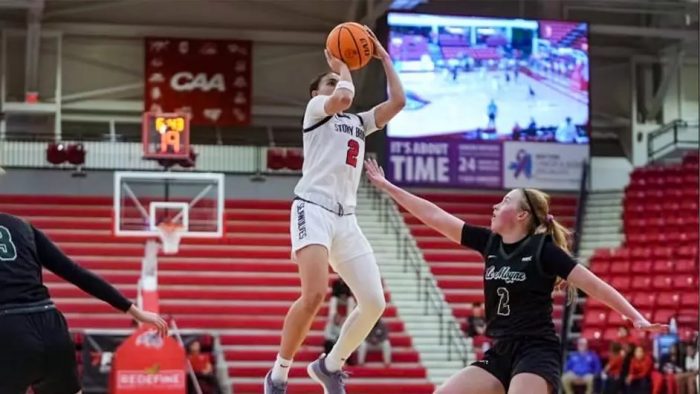By Daniel Dunaief
Stony Brook University is providing another opportunity for students and the community to venture beyond the labels that define and, at times, limit our views and understanding of each other.

For the second year, the university is hosting the Human Library, which gives participants an opportunity to learn about other people’s lives.
Started in 2000 in Denmark, the Human Library brings “books” (people from different walks of life, which has included a refugee, disabled parent, and person with bipolar disorder) with “readers,” who have a chance to ask questions for 30 minutes with each book.
The chapters these books share has surprised readers and given them a chance to reconsider how they view people whose lives or life experiences are different from their own.
“It’s not meant to teach people something or have them leave being converted to some new thought process,” said Chris Kretz, Head of Academic Engagement at Stony Brook University Libraries. “It gives [readers] an opportunity to speak with someone they may never normally encounter or have a conversation they may not get to have.”
The Human Library event occurs on Wednesday, Nov. 20 from noon to 3 p.m. and from 5 p.m. to 7 p.m. at the Frank Melville Jr. Memorial Library’s Central Reading Room. Participants don’t need to pre-register and can show up at the library, where about 110 readers visited last year.
Kretz recommended the latter session for interested community members, which would allow them to park for free to attend the event.
Following the defined structure created by the original Human Library, attendees won’t know about the specific backgrounds of the books until they arrive. The people that represent the books will all sit at desks wearing the same black t- shirts.
“In the conversation, the colors come out,” Kretz said.
Indeed, Richard Tomczak, Director of Faculty Engagement in the Division of Undergraduate Education at SBU and a reader at last year’s Human Library, can attest to that. Tomczak spoke with a book who grew up in the outer boroughs of New York as a member of the working class.
“When you’re having a conversation about shared experiences or experiences that are new to you, it brings out the human characteristics,” said Tomczak. “I wanted to listen and absorb it all.”
Choosing a book
When readers sit down, the book offers a prologue about their lives, providing some details about their experiences. Readers who aren’t sure where to start asking questions or perusing through different chapters in the book can use prompts at each desk to begin their interaction. Readers who stay for an entire session will be able to interact with three or four books.

Photo by Rachael Eyler, Stony Brook University
“This is an opportunity for people to hone their conversational skills,” said Kretz, as well as to learn about the lives of the books who are offering details that may surprise and move the readers.
Indeed, this year, the university is stocking tissues near each book for those readers who may feel particularly touched by the stories they hear.
The university would like to ensure that the conversation is respectful and that both sides are comfortable with the discussion.
“We have rules for readers,’ said Kretz. “When they sit down with the book, the pages are in mint condition. We want to make sure everyone is on the same page. Books don’t necessarily have to answer every question.”
Kretz urged attendees to recognize that the interaction is not a debate, but presents ways for people to understand more about their own judgments and, as the Human Library website suggests, to “unjudge” each other. In addition to speaking and asking questions, readers and the books will have a chance to process what they’ve heard.
“By design, it’s a session where you have to listen,” said Kretz. “One of the values is that people get a chance to practice this muscle.”
Second year
In the second iteration of the Human Library, Stony Brook added the later time so people could come after work. The administrators have also reached out to journalism classes and to people in international programs.
Students from other countries will “have a chance to meet people they wouldn’t have met” during their time abroad, Kretz added.
After speaking with the people who served as books last year, Stony Brook heard that the books also wanted to serve as readers of some of the other people’s lives.
University officials were pleased with the exercise last year.
“I’m impressed by how open our community was,” said Kretz. “People learned a great deal from listening to each other.”
The university is considering making this an ongoing annual tradition and might even bring people together each semester.
Other New York schools and libraries have embraced the Human Library process, including Adelphi and SUNY Albany. The Human Library has also caught on globally, as people in 85 countries on six continents have helped facilitate these conversations.
While the participants engage in meaningful discussion, the exchange isn’t designed to create a lasting social network or lead to ongoing connections between the readers and the books.
“It’s not meant for them at the end of the reading to shake hands and exchange business cards,” explained Kretz.
The event is sponsored by the University Libraries and the DEIA (Diversity, Equity, Inclusion, Accessibility) Team with the Division of Student Affairs, Office of Diversity Inclusion and Intercultural Initiative, Office of Military and Veteran Affairs, and Diversity, Intercultural and Community Engagement, and the Program in Public Health.
















